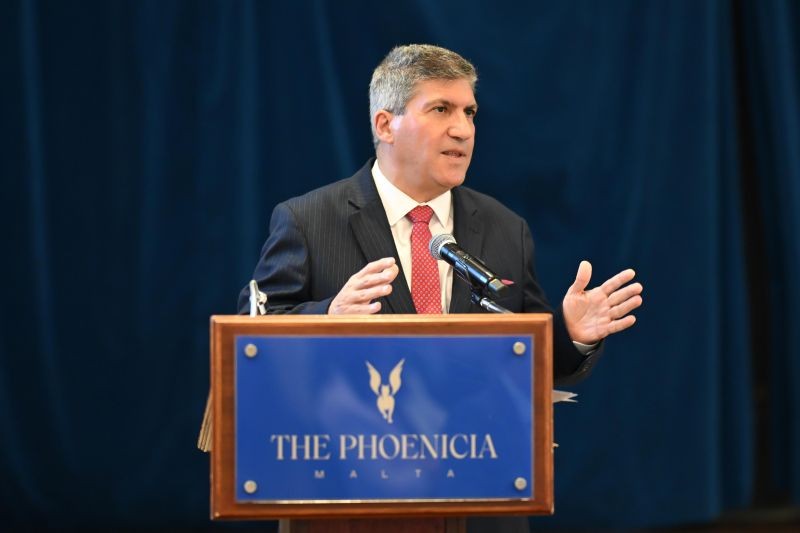Of the many profound consequences for businesses arising from the COVID-19 disruption, one of the most immediate issues is attracting and retaining top talent.
The various lockdowns and working from home for extended periods has afforded many people an opportunity to re-evaluate their lives and consider alternative career choices. Indeed, we have already seen quite dramatic employment shifts in industries such as hospitality, and as economies reopen, many sectors are witnessing severe staff shortages.
According to an article published on CNN online with the headline ‘Restaurant workers are quitting in droves’[i], the ‘quit rate’ in hospitality in the US is far outpacing that of any other sector. This trend is likely to be mirrored elsewhere, and is already evident across Europe. And, it is not only in hospitality that shortages are being seen – transport and construction sectors are also reporting similar concerns.
The causes of these shifts are only partially understood at present; future studies over time will help us to better understand what exactly is happening and how lasting these trends are. In the short-term, businesses that are struggling to find or keep employees are increasing wages, but as all companies in a sector follow suit, that will not solve the problem in the longer term and, unless matched by productivity increases, will only fuel wage inflation and all the dangers that will stem from that.
As we seek to recover from the past 18 months, all CEOs must lead an internal conversation about how to recruit and retain employees and in particular how to ‘reward’ best performers. This article provides some food for thought to guide those conversations.
Let’s begin with a short reflection exercise.
Imagine that a researcher asks you to assist them with a simple experiment. You agree to it, and they guide you to a quiet room where you see the following items laid out on a table: a candle, a book of matches and a box of thumbtacks.

The researcher then explains to you that, using only the items on the table, the aim of the exercise is for you to find a way to fix the lit candle to the wall in such a way as to ensure that the candle wax does not drip onto the table below. They then leave you alone for a while.
Without looking ahead (the solution is shown at the end of the article), how would you go about it? Think about it for a moment before reading on. What solution might you propose?
Most people who are faced with this conundrum think of a few common possibilities: some consider using the tacks to fix the candle to the wall. Others propose lighting a match in order to melt the side of the candle and then stick it to the wall; apparently, none of those solutions work, or at least not very well. The true solution is to empty the box of thumbtacks, put the candle into the box, use the thumbtacks to nail the box (with the candle in it) to the wall, and light the candle with a match. Sometimes, we fail to see the box as having any other function other than to hold the tacks, but it can be used to solve the puzzle.
‘The Candle Problem’, as it is known, was first presented by Karl Duncker, a behavioural psychologist, as far back as 1945, but it remains a popular thought exercise used widely – although not solely for problem-solving purposes as you might think – but as a useful way of highlighting some important issues about motivation.
For example, in his bestselling book Drive: The Surprising Truth About What Motivates Us[ii] author Daniel Pink used the problem toexplain how much of what wethink about incentives in businesslife is wide of the mark. Hereminds us of a study in the 1960swhich was conducted by SamGlucksberg, a well-known Professorof Psychology at PrincetonUniversity, who used the Candle Problem toexplore the power of incentives.[iii]
Glucksberg gathered his participants in the study together and then separated them into two groups, giving them the following instructions:
- He told one group that he was going to time them individually to determine how long it typically took people to solve this type of problem.
- He told the second group that they would get a reward for completing the task. He further explained that if they were in the top 25 per cent that solved the problem fastest, they would get $5.00. He also added that the person who was the fastest of all would get $20.00. (The rewards may sound small today, but back in the ‘60s when he conducted this exercise, they represented a good incentive for what was likely to require only a few minutes’ work.)
The incentivised group, if our views on rewards are correct, should outperform the non-incentivised one, right? Wrong. On average, it took the second group, the incentivised bunch, three and a half minutes longer to solve the problem than it took the first group. In other words, the people without external incentives completed the task much faster than those who were incentivised.
This probably goes against common thinking about how we drive performance. As a form of control, Glucksberg later repeated the same experiment, except this time, when he presented participants with the box, it was empty and the thumbtacks were on the table beside it. (In other words, he made the problem easier to solve because once the box was not being used as a container it took less mental agility to be able to assign a different function to it.) This time, the group that was being rewarded finished the task a lot faster than the other group.
Pink uses Glucksberg’s findings to emphasise that the accepted wisdom in managementcircles is that incentives always produce better results, not worse; but this experiment (and many more like it) consistently show that the get this for doing that approach to incentivising people may well work in some circumstances, but it actually has negative consequences in many situations.
He further explains how he has spent many years studying motivation and has found a strong mismatch between “what science knows and what business does” on the issue of motivating people; he believes that the approach to motivation in business life is centred around a carrot-and-stick mode,l which may work in some scenarios but less and less today where creativity is required. He further emphasises that the get this for doing that reward model tends to succeed for tasks that are well defined, where the rules are clear, where the destination is obvious, but when creative thinking is required, then they do not work, and in fact, can do more harm than good.
Now, when he first promoted this view, even though all the research verified what he was saying, Pink was met with a barrage of scepticism. Having anticipated this, he was armed with some solid evidence to back up his argument. One such example refers to work done by another Dan – Dan Ariely – a leading economist and top-selling author of books such as Predictably Irrational.[iv]
Ariely and his colleagues at Massachusetts Institute of Technology (MIT) conducted a study with students[v] in which they gave them a series of games and offered three levels of reward for their performance at each game: small, medium and large rewards. The better they did on a game, the larger the reward they received.
When a game involved only mechanical skill, the bonuses worked as expected and raised performance. But once the task required the students to think about the outcome and/or to be creative, the rewards led to worse performance. And just to ensure that there was no cultural bias at play in the study, Ariely took the experiment to India where the results were the same.
Whilst perhaps surprising at first, the more you think about these findings in practical terms the more sense they make. If, for example, I work in telesales, where for every successful
sale I make I get a reward and more sales equals more rewards, it is easy to see how a financial incentive might make me strive to achieve more; the process is broadly the same for each call.
I am not saying there is no skill involved, but there is not a whole lot of thinking or innovation required. But, if I were charged with coming up with a new product concept, or a better way of doing something, a financial reward might actually serve as a distraction; the ability to be creative, or to find solutions does not just happen at the flick of a switch – time is required – and if I worry that it is taking too long for the light-bulb moment to arrive, or if I am afraid of missing out on the reward, then that will naturally disrupt the creative process.
So, if financial rewards and incentives have only limited application, how can you get the best out of your people in today’s workplace? Through his research, Daniel Pink, along with many others, has found that ‘intrinsic’ motivation is increasingly important: in other words, motivation that comes from inside an individual rather than from any external or outside rewards such as financial incentives. Social scientists have shown that motivation stems from having a real desire to do something, or because we enjoy doing it, or when we feel that we are part of something bigger. Daniel Pink summarises this altered thinking around three areas:
- Autonomy – the urge to direct our own lives
- Mastery – the desire to get better and better at what we do
- Purpose – the desire to be of service to something bigger than ourselves.[vi]
If you pause for a moment and reflect upon this issue, it starts to make a lot more sense. These three areas really do matter to people in daily work life. And in my experience, interacting with managers and employees across countries and cultures, people at all levels want to fill their day doing something of value, and to feel that they are more than a number, or there simply to implement the decisions of others. Sure, money matters, and in fact the more routine and repetitive the job is, the more the focus probably needs to be on financial incentives. However, and think personally here, no amount of money would compensate you if you hated what you did every day, would it? Genuinely, some of the most frustrated and disgruntled people I have encountered in organisations were those who were highest paid. Other aspects of their role, like being micro-managed or working for a boss who undervalued them, meant they were still unhappy.
Key takeaways
The major takeaway from the article should be that ‘rewarding’ our employees is about a total package of measures (financial and non-financial) and as a CEO, you should lead an internal conversation to rethink what you currently do in this area to ensure that whatever mix you offer works best for your business-type and produces the highest return on investment.
In doing so, the focus should be on the broader Employee Value Proposition (EVP) offered to your employees. EVP relates to the totality of the employment experience available at any given organisation. It is about much more than wages and benefits and includes culture, development opportunities, rewards, leadership, teamwork, and so on.
In fact, EVP is concerned with everything that impacts on the experience an employee has whilst working for your business. Focusing on a value proposition for your employees is also recommended because it forces you to think in broader terms of creating ‘value’ for people across the entirety of their work experience, rather than just concentrating on rewarding them. The concept of EVP is obviously not new, but at a time when competition for top performers is high, it is coming strongly into focus.
And spending time enhancing your EVP is worth the effort according to the Corporate Executive Board CEB in the US, which has studied this area extensively.[vii] In their view, “an effective EVP provides organisations with three quantifiable benefits:
- Improved attractiveness: Companies and organisations that have defined and meaningful EVPs can source employees from a much wider pool of talent. For example, the top performing companies, i.e., those with the most effective EVPs, can draw candidates from about 60 per cent of the labour market, including ‘passive’ candidates who would otherwise be content to stay with their current job. Lesser-performing organisations are able to source only from the most active 40 per cent of the labour market.
- Greater employee commitment: Organisations with effective EVPs enjoy significantly higher levels of commitment from their employees. In fact, CEB indicates that in those organisations with very effective EVPs, 30–40 per cent of their workforce display high levels of commitment, compared to less than 10 per cent in under-performing organisations.
- Compensation savings: Organisations with effective EVPs can reduce the compensation premium required to attract new candidates. Top-performing organisations are able to spend 10 per cent less on base pay compared to under- performing organisations.
It does not require an expert in human resource management to recognise that employees, particularly those in the top percentile, will migrate towards those companies offering the best proposition or overall package. In terms of enhancing your company’s EVP, there is no one-size-fits-all approach of course, because it depends upon many factors such as industry, business size, nature of the work etc, but some of the areas to reflect upon are shown in the table below:

I would love to hear your thoughts on this article and to continue the conversation, so please feel free to contact me directly at endalarkin@dobiquity.com
Reflection exercise solution

[i] https://edition.cnn.com/2021/07/08/business/restaurant-worker-quit-rates/index.html
[ii] Pink, Drive: The Surprising Truth about What Motivates Us (Riverhead Books 2011).
[iii] Glucksberg, “Th e Influence of Strength of Drive on Functional Fixedness and Perceptual Recognition” (1962) 63 Journal of Experimental Psychology, pp. 36–41. In the public domain.
[iv] Ariely, Predictably Irrational: Th e Hidden Forces Th at Shape Our Decisions (Revised edition, Harper Perennial 2010).
[v] Ariely, et al., “Large Stakes and Big Mistakes” (2009) 76 Review of Economic Studies, pp. 451–69. doi:10.1111/;1467-937X.2009.00534.X.
[vi] Pink, “Th e Puzzle of Motivation”, Ted Talks, July 2009. See https://www.ted.com/talks/ dan_pink_on_motivation.html.
[vii] CEB, Attracting and Retaining Critical Talent Segments, Building a Competitive Employment Value Proposition: Executive Summary, 2006, Arlington VA.
Reflections from business leaders

With over 30 years management experience across multiple sectors, Joe is a strong believer that business is all about people. He takes great pride in helping others develop and grow. In his words – ‘When we grow others, we grow ourselves!’
“There is no better time than now to rethink the workplace and adapt with the changing needs.
“Organisations with a flexible and entrepreneurial mindset have a competitive advantage in attracting and retaining talented people.
“People are expecting more from companies. They want a greater sense of purpose and connection to their work, so we need to spend more time with them to understand their needs or be prepared to lose talent to companies that will.
“Companies that have a strong remote strategy will come out ahead. Individuals are looking for companies that will allow them to maintain a work/life balance.
“It is clear that talented employees want to work for organisations that bring happiness and meaning to their everyday lives.”

A passionate entrepreneur, curious scientist and creative leader as well as a proven businessman. Chris’s hallmark is the high energy and enthusiasm he brings to all his endeavours.
“In my decades of management experience, I have become convinced that reward systems are useful to show one thing – ‘I/We care, you are special’. A one size fits all model is the easiest to manage, but it FAILS in this regard. I have seen people who prefer a car OR a car cash allowance, a higher variable OR fixed salary, others who want set targets to be able to measure their performance OR others who expect to be completely free, colleagues who prefer to work from a nice office OR from home, and even those that enjoy exposure VS. the ones who don’t even have a social media account.
“Reward systems are as varied as the human beings at your workplace. In an era of hyperpersonalisation, where we are constantly targeted by advertisers and marketers with products and solutions tailor-made to our preferences in our personal lives, how can one realistically expect to take the easy way out and standardise rewards? Not every person puts the same value to the same things and taking an interest in knowing your staff is the most important element you need for retention. People want to feel REALLY appreciated. Be authentic.
“I can only give this piece of advice when it comes to recruitment and retention… make this your priority and if you lack expertise, get external help. There are even software tools that help you to regularly measure employee engagement. I did and the results exceeded my expectations.”
6 morning routine mistakes to avoid that could cost you productivity
There are easy and effective ways to set the right tone from the start of your day.
Mistakes CEOs regret and how to avoid them
Many CEOs look back and wish they had done things differently.
6 steps business leaders must follow to address negative online reviews
Responding to online critics is an effective way of protecting a company’s reputation and building customer loyalty.
Provide feedback and show respect: 5 ways business leaders can steer a young team towards success
Millennials and Gen Z employees are on the rise, and while they are wrongly viewed as ‘unmotivated’ and ‘entitled’, they ...









